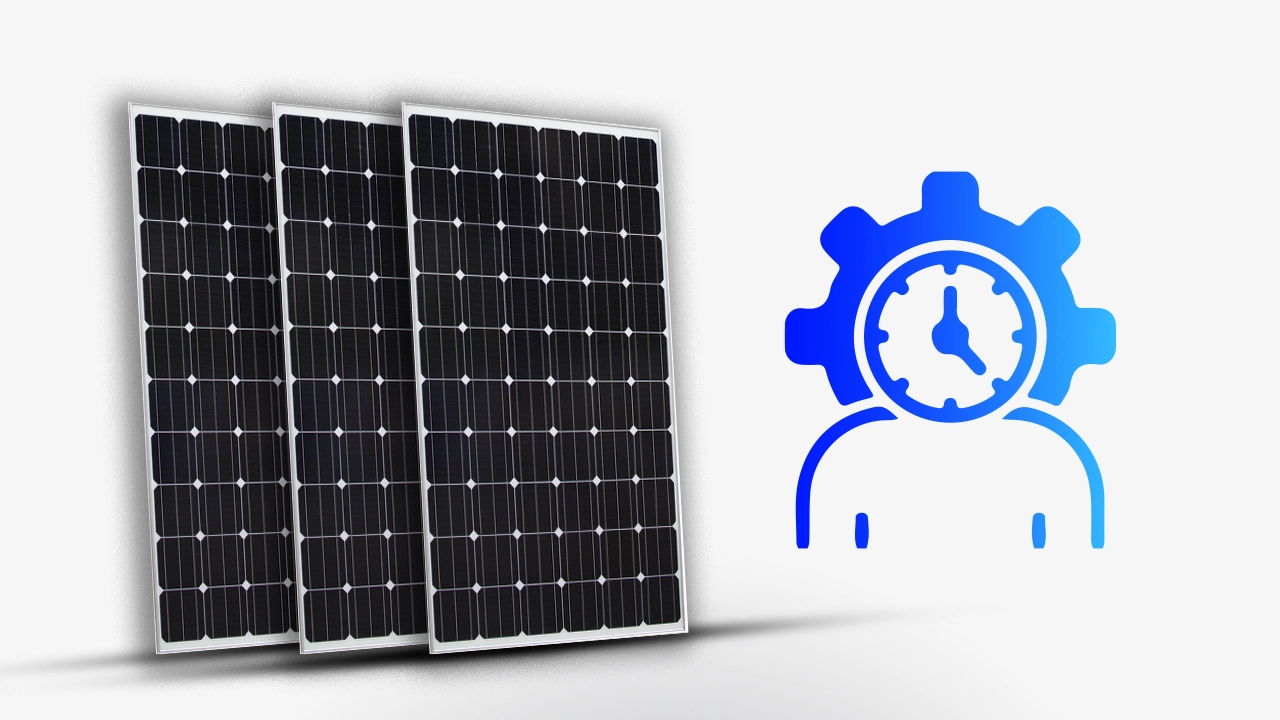- Updated On: February 18, 2025
How Many Solar Panels Do I Need for My Home?
In the United States, rising inflation, high energy costs, extreme weather, frequent power outages, and less grid reliance are the major reasons for switching to solar. However, when a homeowner decides to embrace clean power, the first question that pops up in their mind is, “How many solar panels do I need?”. It is important to figure out the number of panels, as it makes a huge difference in installation costs. Also, if your PV system does not fulfill your home energy needs, your solar investment may become unprofitable.
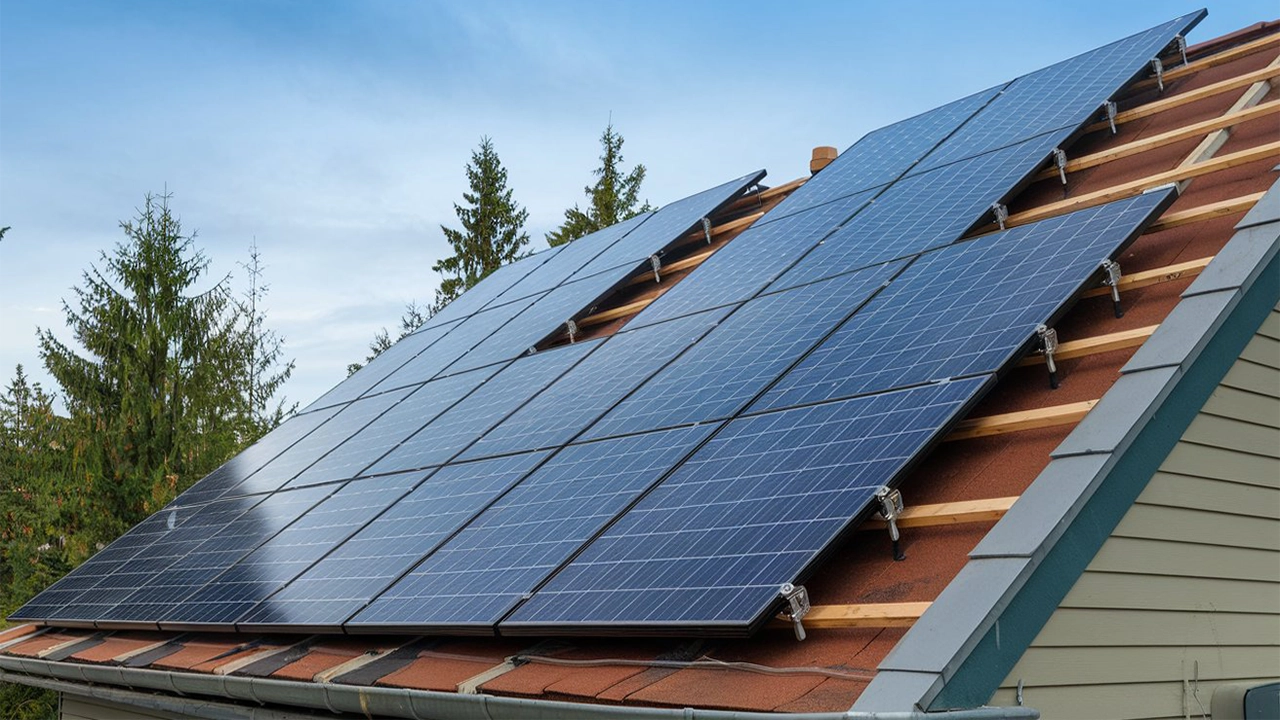
The size of your house and electricity you use will determine how many solar panels are needed to run it. This article will help you calculate the number of solar panels required for your home. This will help you determine the cost of installation and estimated savings on your energy bills.
How do I calculate the number of solar panels for my home I need?
To completely offset annual electricity bills, homeowners in the United States usually require 10 to 20 solar panels, though this varies depending on individual home energy use.
As most solar installations aim to completely cut energy bills, the size of your solar system should match your average electricity consumption.
You can determine the number by dividing your annual electricity consumption by the production ratio in your area and then dividing that figure by the power output of your system.
Number of Panels = System Size/Production Ratio/Panel Wattage
However, several factors determine the average number of solar panels you need to meet your energy needs. Using our smart solar calculator is the simplest way to get a free estimate of your system cost, number of panels and energy savings based on real time energy data.
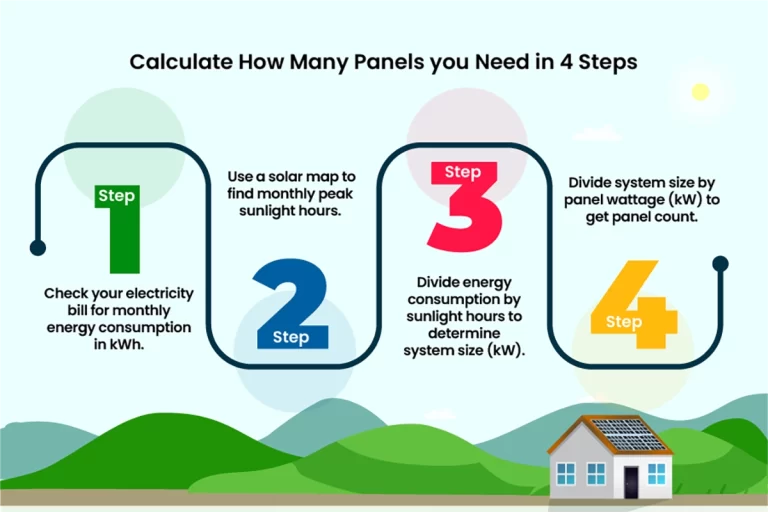
What are the 5 major factors to determine how many solar panels you need?
Every home energy needs and goal is different; however, you need to consider several factors while solar system sizing. These factors include:
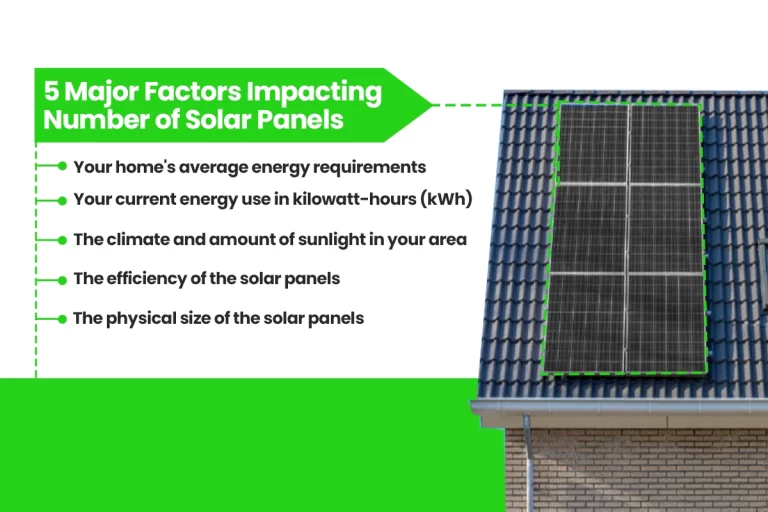
How much solar power will you need?
To determine how many solar panels you need, review past utility bills to find out how much energy your house really uses on average. Multiply the hourly energy use of your home by the number of hours of sunlight in your area, then divide that number by the wattage of a solar panel. For example, to generate 11,000 kWh/year, you may need 17-42 panels depending on their wattage considering between 150 – 370w/panel . Also consider the size of your roof and the sunlight peak hours your house receives.
How many watts do you currently use?
You need to check your electricity bill to understand your energy usage in “Kilowatt Hours (or kWh) .
To calculate your usage, subtract your previous month’s meter reading with the most recent one.
for monthly usage calculation, divide the total by 30 or 365 for yearly. If you want to calculate your usage on a daily and hourly basis further divide by 24.
- Yearly Energy Consumption: Total kWh Used/365
- Monthly Energy Consumption: Total kWh Used/30
- Hourly Energy Consumption: Total kWh Used/24
A large house in the south, where air conditioners consume the most energy, may use 2,000 kWh or more a month, while a small home in a temperate zone might use about 200 kWh. The EIA estimates that the average house in the United States uses approximately 900 kWh per month. That works out at 1.25 kWh every hour or 30 kWh per day.
How many hours of sunlight can you expect in your area?
Your home solar system’s energy output will depend on when the sun shines the brightest in your area. In the United States, the average daily peak sun hours vary. It’s 5.75 hours in the Southwest and fewer than 4 hours in the northern regions. If you live in Phoenix (Arizona), you can expect more peak sunlight hours than in Seattle (Washington DC). That implies a house in Seattle would need more panels to generate the same amount of energy as a system in Phoenix. It doesn’t mean a Seattle homeowner shouldn’t go solar. The National Renewable Energy Laboratory (NREL) provides sunlight information by state and for major cities.
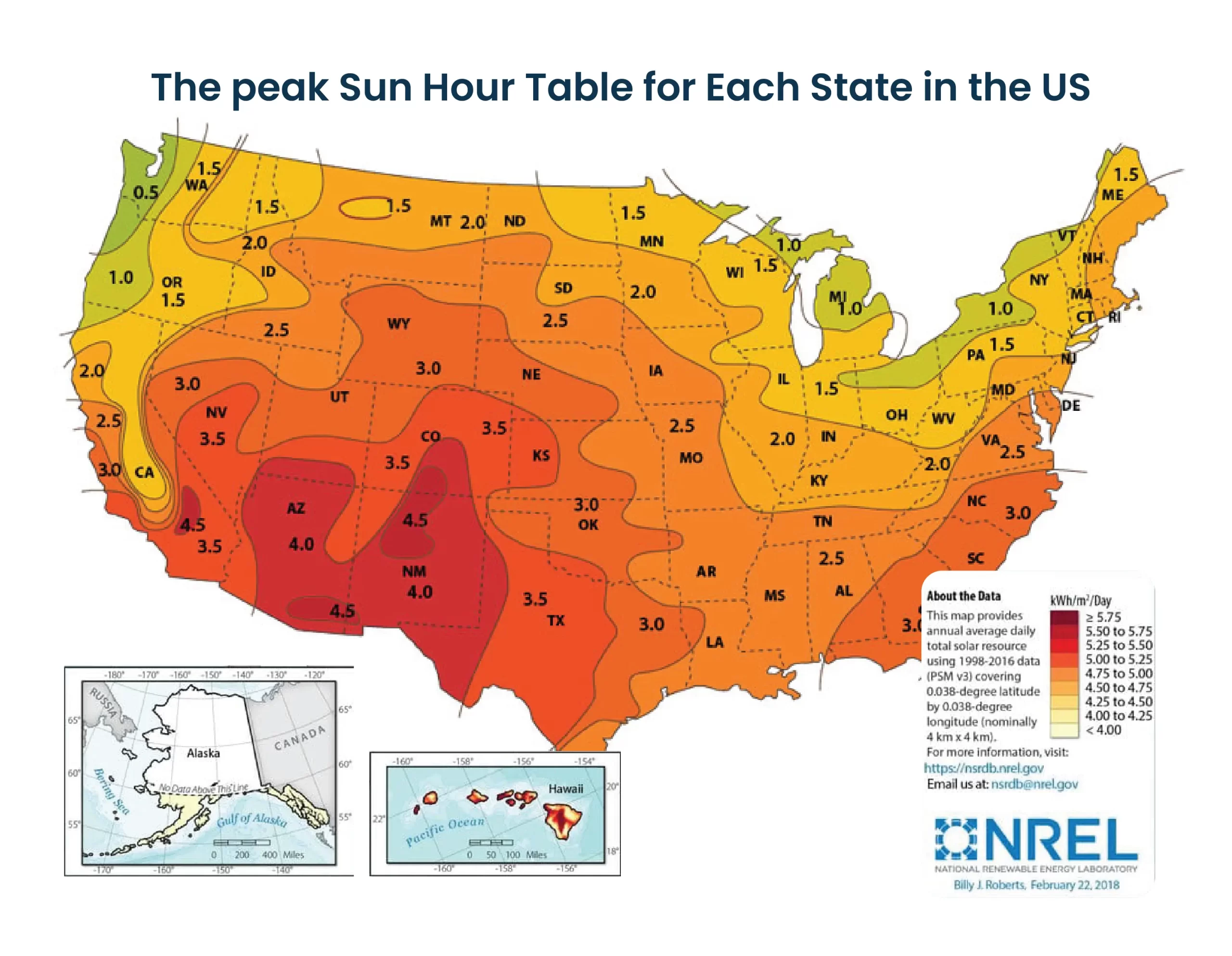
What affects solar panel efficiency?
The quality of the solar panels matters. The wattages of photovoltaic (PV) system, which are commonly used in residential installations depend on the cell type, and panel efficiency (the ability of the panel to convert sunlight into electricity). However, the key is that more efficient panels can generate more wattage, which means you will need fewer on your roof to achieve the same output.
What is the effect of solar energy system size?
The size and number of solar panels can be determined by your roof size or available space at home for solar system installation. If your roof is partially shadowed or has a limited usable area, using fewer, high-efficiency panels can be the best option to generate the most power over time and save the most money in the long run. Here is the estimated number of solar panels needed for specific system sizes. The table assumes 400W solar panels with a 1.5 production ratio.

What are the factors that can limit how many solar panels you can install?
It is not always possible to install the number of solar panels you require. Several limitations affect the number of solar panels you can get.

Roof Size and design
Approximately 334 square feet, or 20% of the space of a normal home roof, make up a typical 7.6 kW solar installation. High-efficiency panels that can generate more electricity in less area are a good option in this case. The number of solar panels you can install is limited by the fact that they can’t fit on roof barriers, such as vents, chimneys, or skylights. Explore the best roofs for solar installation.
Shading
Installing solar panels may be affected by shading. Shade can be minimized by pruning bushes or trees, but it is more difficult to control things like nearby homes. Some parts of your roof cannot have solar panels installed if there is a shadow. But if there’s a better location, you could put even more solar panels there.
Utility restrictions
The number of solar panels you need to install will vary depending on how each utility provider charges bills to solar consumers. Installing fewer panels will help you avoid spending too much for a larger system because some utilities do not fully credit extra solar power generated over your monthly energy consumption. Many utilities impose system size limits based on energy usage.
Personal budgets and costs
Solar system costs vary depending on the solar products brand, the number of solar panels you require, your location, and your energy needs. So, if you are budget-limited, you may not choose high-efficiency panels or the backup solution, etc. However, a 30% federal tax credit and local state solar incentives offer a great opportunity to minimize your upfront installation cost.
Do you need more solar panels if you go off-grid?
Generally, yes. If you plan on living off-grid and only using solar power and a battery system to provide you with electricity, you need enough power to meet your needs even in the winter when solar panels produce less energy. In this case, we recommend you connect with a local solar installer like SolarSME for the best solutions.
So, if you understand the above discussion, you can figure out the average number of solar panels for your home. However, before calculating how many solar panels I need, it is vital to be clear with your clean energy goals. Whether you want to go off-grid or on-grid, the system size will vary.
Get a FREE and INSTANT Estimate of your system size & savings with our smart solar calculator now!
Related Articles:
In the United States, homeowners and businesses are rapidly transitioning to solar power. Investing in solar is a great option to get rid of increasing energy bills for the future.
With the installation of solar array, you can get clean energy and reduce your electricity bills. A solar array is a set of solar panels.
If you have ever wondered how solar panels work you are not alone. People around the world have studied solar energy for nearly 200 years.

